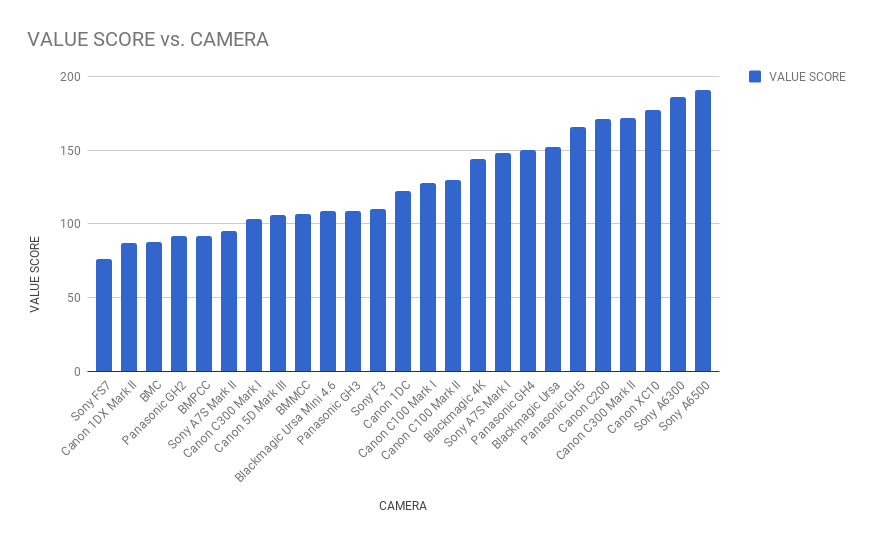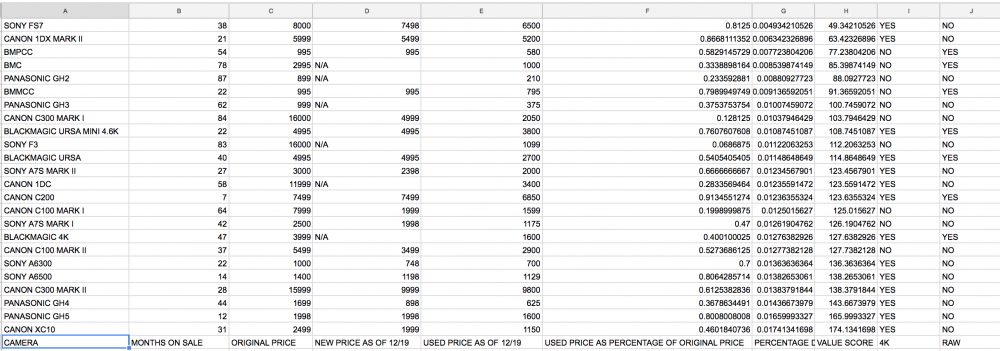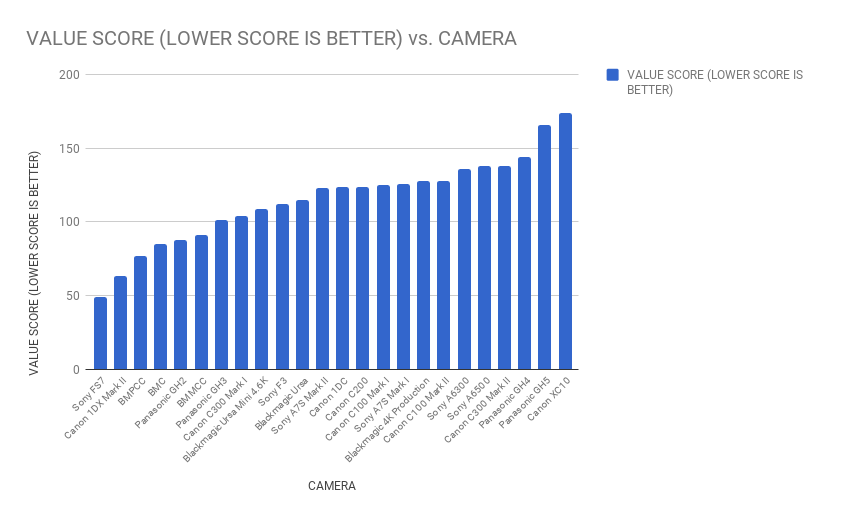
Garrett S
Members-
Posts
8 -
Joined
-
Last visited
About Garrett S

Profile Information
-
Gender
Male
Contact Methods
-
Website URL
https://www.perrotpictures.com
Garrett S's Achievements

New member (1/5)
7
Reputation
-
 webrunner5 reacted to a post in a topic:
The simple thing the GH5 does not seem to achieve: the magic of the GH2
webrunner5 reacted to a post in a topic:
The simple thing the GH5 does not seem to achieve: the magic of the GH2
-
I had the same thought about cameras being too good the other day when I was watching C200 raw. The video was a wedding trailer, and the closeups showed almost too much detail in makeup.
-
 andrgl reacted to a post in a topic:
Longterm Camera Value and Cutting Edge Cameras
andrgl reacted to a post in a topic:
Longterm Camera Value and Cutting Edge Cameras
-
That's really interesting, thanks for sharing.
-
 webrunner5 reacted to a post in a topic:
Longterm Camera Value and Cutting Edge Cameras
webrunner5 reacted to a post in a topic:
Longterm Camera Value and Cutting Edge Cameras
-
Nice, this is one of the cameras I had in mind when I was thinking about this. ML has really extended its longterm value, but I know of people who are still using the 5D III without ML as a B cam professionally. I'm still shooting on a MK I C100, and I have the same thoughts about it, even minus ML. It has some serious shortcomings in 2017 (no 60p), but it has a 1080p image that can compete with newer and higher resolution cameras in a lot of other ways.
-
No problem, these are all good points.
-
 webrunner5 reacted to a post in a topic:
Panasonic seems to be announcing something "BIG" on December 15
webrunner5 reacted to a post in a topic:
Panasonic seems to be announcing something "BIG" on December 15
-
 maxotics reacted to a post in a topic:
Longterm Camera Value and Cutting Edge Cameras
maxotics reacted to a post in a topic:
Longterm Camera Value and Cutting Edge Cameras
-
 Justin Fletcher reacted to a post in a topic:
Panasonic seems to be announcing something "BIG" on December 15
Justin Fletcher reacted to a post in a topic:
Panasonic seems to be announcing something "BIG" on December 15
-
Hopefully. Honestly, I'd be beyond happy and would pay several thousand dollars if a company just took the guts of the BM Micro Cinema Camera and put them into a more useable form, like a GHX or XC10 or even a C100 body. I don't need or want 4K, but I do want ProRes (for client projects) and raw (for learning and passion projects) and thirteen stops of latitude. I also want a flip out screen and decent battery life. I think even in the age of 4K, an ergonomic and efficient 1080 60p raw shooting camera with built in ND filters and usable audio would sell like crazy. I think the push by consumers and manufacturers to move to 4K before really pushing the limits of dynamic range and color science was a mistake. Of course, if you have enough money for storage, media, and processing power, you can have 4K, great color, and raw/ProRes, but for most it's not yet realistic.
-
I reran the numbers with eBay completed listing medians. They're rough medians and include Buy it Now and auctions. I didn't go through every camera listing to check its condition and what it was offering. It's a rough eyeball based on the ranges of price. Most cameras didn't make major shifts, but a few are higher or lower than they were in the first graph. Again, lower scores mean value is retained for longer.
-
Have the NX-1 and NX500 risen in value over time? I haven't kept up with them. I actually looked up the NX-1 for this set of data but could only find bundles for it that included lenses, and I didn't really think it was comparable. I could see how the shutdown of production and then a hack could actually cause a camera to go up in value. Isn't that the situation with the Digital Bolex too, except for the hack? That's a great suggestion. If I have some time in the next few days I'll do that and rerun the numbers. My original thinking was, if I wanted to buy this camera for the lowest price possible on eBay right now, what would I pay? But I think using your suggestion would give a better overall perspective. The every ten month thing I think too is why the Sony AXXXXs are so high on the list. By the reviews they're not bad cameras, they're just released so fast that their features are already outstripped in ten months by something really similar in function, form, and lens mount. But then again, the GH4 and GH5 have high scores (lose value quickly), and they both had a decent amount of time between their release and the release of the earlier model. It will be interesting to see how GH5 prices play out as the GH5s hits the market in the next few months. That's a good point about the C300 MK1 at the same point in its life. It will be interesting to see what happens with the FS7 over the next few years. By my own rules, I probably shouldn't have included the 1DX MK II. I included it out of personal curiosity, and because I think it's a camera with a special image and set of features. Out of curiosity, I looked up the numbers for the 5D MK III, and its score was 87, so it's very competitive too. You're right about the Buy It Now data. I could have used completed listings and included auctions as well. I might rerun the numbers if I have some time. My thinking was to go with the numbers if I wanted to buy the camera used, on eBay, on that exact day.
-
 IronFilm reacted to a post in a topic:
Longterm Camera Value and Cutting Edge Cameras
IronFilm reacted to a post in a topic:
Longterm Camera Value and Cutting Edge Cameras
-
We all know that cameras are terrible investments. They instantly lose value when you open them and they’re no longer new-in-box, and then they steadily lose value over time. It really only makes sense to think of a camera as an investment if you’re a business buying a camera that will directly impact your ability to get work or if you’re a collector selling rare antiques. Otherwise, you can only plan on losing money on whatever camera that you buy. Buying a camera and expecting it to increase in value is usually really silly. At the same time though, cameras lose values at different rates. Some cameras command used rates very near their launch prices, and other cameras sell for way less than their initial price a year after launch. Importantly though, I think the value of a camera over time can show how forward-looking the company that launched the camera was with that model when it released it. A camera released in 2014 that’s still relevant right now had valuable features in 2014, but is also is still competitive in some way in 2017 (or 2018). I’m thinking that the forward-looking value of a camera can be calculated based on a few points of data: first, how long the camera has been on the market; second, how much the camera cost when it was initially released; and third, how much the camera is selling for used today. In short, I think the difference between what a camera sold for when it was released and what you can buy it for used today can show how competitive the camera is relative to other cameras. So, what I did was to search out data for some of the most commonly used cameras for video and analyze how old they are, how much they sold for when first released, and how much they sell for now. The short version is that I made a Google Sheet and compared the values of cameras over time to see which cameras held their values best over the months they’ve been on the market. The long of it is this: I made ten columns in a Google Sheet. The first column identifies the camera. I chose cameras that are most discussed on the blogs that I frequent, like this one, but I purposely excluded cameras that are also super popular in photography, like the 5D Mark II and III. Their used online value might be less attached to their video functions than others here. The second column is the number of months the camera has been on sale. I used the actual “the camera is available on B&H” date whenever possible. For cameras where the announcement date and the sale date weren’t hugely different, I didn’t make a distinction. For cameras (like some Blackmagic cameras) that were announced and didn’t go on sale until months later, I used the actual “available for sale” date when I could find it. I rounded to the nearest month. The third column is the original price that the camera sold for. The fourth column is the new price as of 12/19/17 (this is mostly for my curiosity and doesn't actually figure into any of the calculations). The fifth column is the used price as of 12/19/17-12/20/17. I used the lowest “Buy-It-Now” price from eBay (US) I could find for each camera, but I only accepted cameras that I would actually purchase (if I was looking for one) based on their being used but totally functional and coming from buyers with decent feedback. The sixth column is the used price as a percentage of the initial new price. For example, a camera that debuted for $2,000 and now sells for $1,000 is selling for 50% of its initial price. The seventh column is the percentage of value lost divided by the number of months the camera has been on the market. I found the percentage of value lost by subtracting the percentage of the new price that the camera sells for used from one. The eighth column is the tiny percentage from the seventh column multiplied by 10,000 to make it more readable. I’m basically creating a “value score,” where the lowest number is the camera that has retained its value the best. The ninth and tenth columns are whether the camera shoots in 4K or raw, respectively, because I wondered whether that would make an obvious difference. This is a graph with each camera’s “value score” (the percentage drop per month multiplied by 10,000), rounded to the nearest one. Essentially, the lower the score, the less value the camera has lost over time, or in other words, the better it’s retained its value relative to the number of months it’s been on the market. Here’s all the original data. So, basically the FS7 has lost very little of its value over time, while the Canon XC10 has lost a ton of its value over time. Most cameras fall in the middle range. Interestingly, every major company has a camera in the top five, and every major company also has a camera in the bottom five. Interestingly, 1080p and 2.5K cameras do pretty well by these calculations. The BMPCC, BMC, Panasonic GH2, BMMCC, and GH3 have all held their value relatively well, while a lot of 4K cameras have lost value relatively quickly. I wondered whether raw shooting cameras would do better, but I don’t think there’s a strong correlation. I’m sure there’s some complex relationship between resolution, codec strength, lowlight ability, sensor size, marketing, and a million other factors, but I don’t know what it is. Interestingly, it’s also possible that the most popular cameras sell for lower prices relative to their new prices because so many people have bought them and used supply is high when those customers decide to move on to new cameras. However each camera has maintained its value, I think the cameras with low scores were (are) futuristic in some way. They have to be to still be relevant today, or to have still been relevant so recently (in the case of the GH2). There’s a lot of limitations to my analysis. It’s mostly for fun and to drive discussion. First, the eBay prices are a tiny sample over two days. I’ve seen cameras go for a lot lower than the prices listed here. I saw a BMMCC go for $550 a few days ago, but when I actually did the analysis the lowest price I could find was $800. That’s a substantial change, but I wanted to take all the prices from one window of time. Second, I don’t think eBay is (usually) actually the lowest price source for buying a camera used. The cheapest BMPCC I could find is $580, but there’s one on BMCUser now that’s less and comes with a cage. I’m totally open too to the fact that my math might be less than perfect. I’m not a statistician. I’m just a camera nerd with love for data. Please feel free to point out how I could make it better or if it’s all not valid at all. Or, please let me know if I’ve missed major dates, miscalculated months, or mistook the initial price. I threw this together pretty quickly out of curiosity and can fix it. I’m not picking on any particular camera. I’ve almost bought an XC10 a few times. At the end of the day, whatever camera you buy needs to fit your needs, and the idea that it might retain value isn’t really important if it’s meeting those needs. But, some cameras hit the market and are so cutting edge that they hang on for years. My goal was to look backward with data to see which cameras those were.



